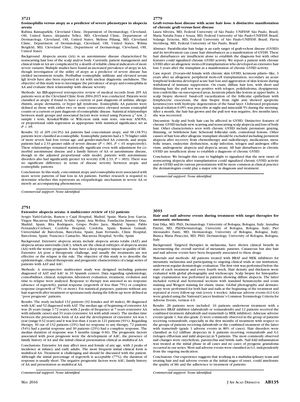Hair and Nail Adverse Events During Treatment with Targeted Therapies for Metastatic Melanoma
April 2016
in “
Journal of The American Academy of Dermatology
”

TLDR People with certain allergic conditions or higher white blood cell counts have more severe hair loss, and treating hair and nail side effects early in melanoma therapy can improve quality of life.
In a retrospective review of 205 alopecia areata (AA) patients at the Cleveland Clinic, researchers found that 44.9% had concomitant atopy and 18.5% were classified as eosinophilic. Eosinophilic patients had 3.70 higher odds of severe hair loss, and atopic patients had 2.33 greater odds of severe disease, with both relationships remaining significant even after adjusting for comorbid autoimmune disease and family history of AA or autoimmune disease. The study concluded that atopy and eosinophilia are associated with more severe hair loss in AA patients, suggesting a need for further research to determine if these are etiopathologic mechanisms or accompanying phenomena in severe AA. Another study included 132 patients with extensive AA, finding that 23% had no response to therapy, 54% had a partial response, and 23% had a complete response, with poor prognosis associated with alopecia areata universalis (AAU), family history of AA, and initial presentation as multifocal AA. Lastly, a study on hair and nail adverse events during treatment with targeted therapies for metastatic melanoma in 28 patients showed that early treatment of these events could improve patients' quality of life and adherence to treatment.
